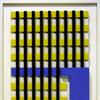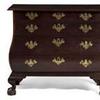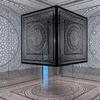Major Exhibition 'Branding the American West: Paintings and Films, 1900–1950' Heads to Sole East Coast Venue
- NORFOLK, Virginia
- /
- September 29, 2016
Discover a bonanza of Western paintings, films, and sculptures in the Chrysler Museum of Art’s fall keynote exhibition. Branding the American West: Paintings and Films, 1900–1950 features classic images of cowboys, Native Americans, mountains and deserts. Though many of the works closely correspond to most Americans’ ideas of the “Wild West,” the show also includes artworks that challenge those popular views. The exhibition, organized by the Brigham Young University Museum of Art and the Stark Museum of Art, will be on view to the public from Saturday, Oct. 29, 2016 through Sunday, Feb. 5, 2017 in the Museum’s Norfolk Southern Special Exhibitions Gallery (G. 101–102). Admission is free.
Headlining this stampede of more than 100 works of art are iconic images by Frederic Remington, Charles Marion Russell, and N. C. Wyeth. These master illustrators created a visual “brand” for the frontier as a land filled with adventure and rugged individualism. Turn-of-the-century city dwellers adored nostalgic fantasies of the Wild West, but as this show reveals, some artists challenged these stereotypes and acknowledged the taming and modernizing of the region.
“At the crux of this show is the creation of a myth — the myth of the American West,” says Museum Director Erik Neil. “This exhibition addresses the role that myth has played in forming our American identity.” Since the Chrysler Collection has very few works of Western art within its sweeping American art galleries, “an exhibition of this scope and scale brings something new to our audiences. It transports visitors across the country — and back in time—to a place of mystery, beauty, and sometimes danger and contradictions.”
Paintings and novels about the Wild West fueled tourism and immigration to the region, particularly Utah, Arizona, and New Mexico. Branding the American West explores this moment of change, considering how the arrival of railroads, automobiles, and industry shifted the character of Western art. Painters discovered the bright sunlight and rich colors of the Southwest and responded with experimental and abstract styles of artmaking, as seen in Maynard Dixon’s Mesas in Shadow (1926) and other sweeping vistas. The show features more than a dozen powerful landscapes by Dixon, who described his work as capturing the West’s “sense of sun and space and silence—of serenity—of strength and freedom.”
“By 1900 the days of cowboys fighting Indians were over,” explains Brock Curator of American Art Alex Mann, who organized the Chrysler’s presentation of this show. “Some artists painted historical and fictional scenes, building a mythology that lives on today. Others chose to observe their immediate surroundings and record the modern West,” he says. “It’s exciting to tour these galleries, see two distinct brands of Western art in competition, and choose your favorite.”
Some of the finest paintings in this exhibition were created in Taos, N.M., a Pueblo village that developed a vibrant colony of artists beginning in the 1910s. These artists’ appreciation for both the landscape and cultural history of the West is evident in works like Joseph Henry Sharp’s Council Call of Crows, Montana (ca. 1908), a magnificent sunset view of an Indian camp. Other works by the Taos painters celebrate the extraordinary craftsmanship and design of Native pottery, baskets, and textiles.
“Perceptions about Native Americans were changing,” says Mann. “Many of these paintings show sympathy for the political disenfranchisement of the Native Americans and respect for artistic traditions of the Pueblo, Navajo, and other tribes,” says Mann. The Chrysler Museum has drawn from its own collection to supplement the exhibition with selected ceramics and glass depicting Indians. Upstairs in the Museum’s Gallery 212, the Museum’s 19th-century American landscape paintings and sculptures have been augmented with a special loan from the Fenimore Art Museum in Cooperstown, N.Y. Thomas Cole’s early masterpiece Landscape Scene from “The Last of the Mohicans” (1827) provides a longer historical perspective on visual ideals of the frontier.
Perhaps the most innovative feature of Branding the American West is its comparison of fine art with film, breaking new scholarly ground by recognizing the importance of the American West to the early history of Hollywood. Throughout the galleries video monitors will juxtapose clips from classic movies by John Ford and Cecil B. DeMille with the works of Remington, Dixon, and their colleagues. These pairings show how filmmakers translated competing “brands” of the frontier from canvas to the big screen. A series of Western-themed programs, talks, films, and family activities complement the exhibition throughout its run.
“The Chrysler is proud to be the only East Coast venue for such a groundbreaking scholarly exhibition,” says Erik Neil. “With its creative mix of art and cinema, it balances familiar faces with surprising stories in an accessible, thought-provoking way.”
The show debuts exclusively for Chrysler Museum Members with a Preview Party on the evening of Friday, October 28, 2016. The show opens to the public on Saturday, October 29, 2016 and is on view through Sunday, February 5, 2017. Admission is free.
Branding the American West: Paintings and Films, 1900–1950 is organized by the Brigham Young University Museum of Art, Provo, Utah, and the Stark Museum of Art, Orange, Texas, and is made possible in part by the generosity of the Charles Redd Center for Western Studies and the Nelda C. and H. J. Lutcher Stark Foundation.
The exhibition’s presentation at the Chrysler Museum is made possible by the Joan and Macon Brock Endowment for American Art.
For additional program information, see the Museum website at chrysler.org.


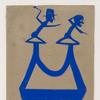

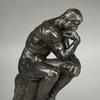

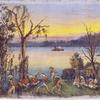

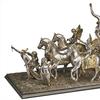
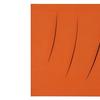

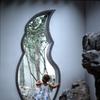

100x100_c.jpg)
